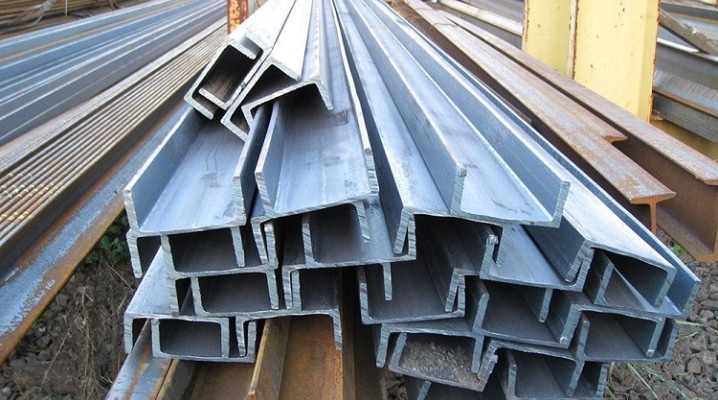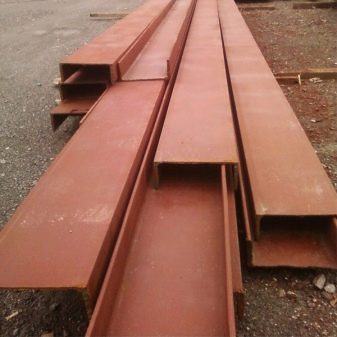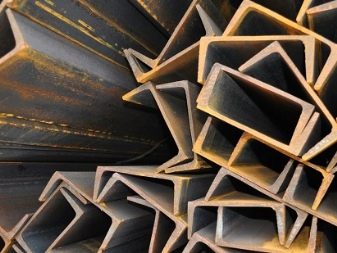Features of channels 24 and their dimensions

The channel of standard size 24 belongs to the group of hot-rolled steel products, it is distinguished by a cross-section in the form of the Russian letter P. Like any other profile, this type of metal products has both its similarities and differences with other beams. We will talk about all this in our article.
general description
Like any other version of metal products, the channel 24 obtained by hot rolling is most often made from structural carbon steel at specialized section rolling mills. Typically, grades St3, C245 or C255 are taken as a basis - a distinctive feature of such alloys is a high concentration of iron, its share reaches 99-99.4%. For the manufacture of channels that will be used in environments with high humidity, 09G2S grade alloys are used.
Less commonly, low-alloy metals 09G2S are taken, due to which the consumption of metal blanks is significantly reduced.


Channel 24 is distinguished by high strength characteristics, including bending strength. This product can withstand increased axial loads, therefore it is widely used in the construction of bridge structures and columns. This type of beams has also found its application in the construction of residential or industrial buildings. Beam 24 visually resembles a steel bent profile. However, if you look closely, you will notice significant differences in the cross-sectional configuration. The thickness of various elements of a hot-rolled channel, that is, shelves, walls, as well as the transition area between them, varies. For bent varieties, it is the same in all sections of the section.
Hot-rolled channel number 24 presupposes transitions of both shelves to the main wall, rounded from the inside, and from the outside the corner has a clear straight appearance. For bent beams in this section, the bending on both sides is made smoothly. The principle of marking the rental is also different. So, the product in question is designated by a number that exactly corresponds to the height of the channel, that is, the width of the main wall between the outer edges of the shelves, reduced by 10 times. That is, for product number 24, the shelf height will correspond to 240 mm. Therefore, if in the estimate, project documentation or invoices, the rental indicated as "channel 24" is indicated, then you can immediately imagine what kind of metal product it is and exactly how it looks.
For information! When marking curved channels, other designations are used - they provide for a long number consisting of several digital values. Their decoding is contained in specialized regulations and regulations. For all other types of channels, the values are indicated in the marking, for example, channel 120x60x4.
The element in question is produced in accordance with GOST 8240. It applies to all hot-rolled beams, both general and specialized, in the corridor of heights from 50 to 400 mm with shelf widths from 32 to 115 mm.


Assortment
In accordance with the established standards, the range of beams 24 includes several modifications. The basis for the classification is the shape of the shelves in the cross section of the product. In this regard, rental can be:
- with parallel shelves - in this case, the inner and outer edges are fixed perpendicular to the base;
- with inclined shelves - the design of such shelves provides for an inclined edge on the back side.
Depending on the parameters of the cross-section, there are:
- U - rolled products with shelves of the first type, located with a slope;
- P - with parallel shelves of the second type;
- E - economical metal products with shelves of the second type;
- L - a light model of beams with flanges of the second type, similar channels are made of lightweight alloys;
- C - special with shelves of the first type, this group of rolled metal is intended for use in certain conditions.
Thus, in accordance with the current GOST, the entire range of channels number 24 includes 5 main options:
- 24U;
- 24P;
- 24E;
- 24L;
- 24C.


Dimensions and weight
The thickness of the beam of standard size 24 directly depends on its subspecies. It is usually measured in two areas:
- S is the width of the wall, that is, what is considered to be the width of the channel itself;
- t is the thickness of the narrower flange, in everyday life it is defined as the height of the channel.
GOST establishes the following parameters of values for a given type of rolled beams 24:
- for products with a height of 90 mm with inclined inner edges: S = 5.6 mm, t = 10.0 mm;
- for products 240 mm wide and 95 mm high with a slope of the inner edges: S = 5.6 mm, t = 10.7 mm;
- for products with a height of 90 mm with parallel edges: S = 5.6 mm, t = 10.0 mm;
- for products with a height of 95 mm with parallel edges: S = 5.6 mm, t = 10.7 mm.
It should be borne in mind that the thickness is an average indicator, it is measured approximately in the central part of the narrow flange face. Over the entire surface of the measured element, it can vary. So, as you approach the wide shelf, this indicator rises, and near the narrow one, accordingly, decreases.
Depending on the type of rental, the parameter of the channel cross-section will also vary. For size 24, the following parameters are set:
- for products with a height of 90 mm with an inclination of the edges, the area corresponds to 30.6 cm2;
- for products with a height of 95 mm with sloping edges - 32.9 cm2;
- for products with a height of 90 mm with parallel faces, the cross-sectional area is 30.6 cm2;
- for products with a height of 95 mm with sides located in parallel, this figure corresponds to 32.9 cm2.


There is also a difference in calculating the specific gravity of 1 running meter for beams of different types:
- for 24U and 24P - 24 kg;
- for 24E - 23.7 kg;
- for 24L - 13.66 kg;
- for 24C - 35 kg.
The parameters of the weight of one running meter, as well as the size of the cross-sectional area, are calculated theoretically for beams with nominal standard sizes. In this case, the mass is set taking into account the density of the steel alloy corresponding to 7850 kg / m3.
Channel 24, made in accordance with the regulations of GOST 8240, is produced in lengths from 2 to 12 mm. By separate agreement with the customer, individual production of longer modifications is allowed. In this case, all beams are supplied in batches and can have one of the following versions:
- dimensional - beams in such a batch exactly comply with GOST standards, and also have the length prescribed in the supply contract;
- multiples of dimensional - in this case, the length of the channel can be increased by 2–3 or more times in relation to the dimensional;
- unmeasured - in such batches, the length of the channel, as a rule, is in a certain range of lengths established by the standard or by the contract;
- non-dimensional with border borders - in this case, the client pre-negotiates the minimum and maximum permissible channel lengths in the batch;
- measured with the inclusion of off-gauge beams - in this case, the share of off-gauge rolled products cannot exceed the level of 5%;
- multiples of measured with unmeasured products - as in the previous case, the share of unmeasured beams in a batch cannot be more than 5% of the total volume of rolled products supplied to the customer.


Applications
Hot-rolled steel channel number 24 has become widespread, and the areas of its use are only expanding every year.
The main area of operation of the steel channel number 24 is frame housing construction.In this case, it is in demand as a basic element for the construction of frames for low-rise buildings. If the channel is used in overall structures, it acts as an additional one. In addition, the beam has become widespread in such directions as:
- production of spiral / marching flights of stairs;
- reinforcement of foundations;
- installation of pile foundation grillage;
- construction of structures for advertising objects.
The geometric characteristics of the channels and the features of the cross-sectional area allow them to be used in the construction:
- powerful bar metal structures;
- columns;
- roof girders;
- supporting consoles;
- stairs;
- screeds in sheet piles;
- ramps.



Among other relevant areas for today, the following can be distinguished. Mechanical engineering - beams can be used as independent structures, as well as individual elements designed to receive high bending and axial loads. They also became widespread in the carriage, machine tool and automotive industries. High technical and operational characteristics, combined with an affordable cost, make rolled metal products popular in the construction and industrial spheres. Recommendation! If, due to some circumstances, the use of a hot-rolled channel is not possible, then the technical regulations allow it to be replaced with a steel I-beam or other analogue of a metal profile.
It should be understood that when assembling any metal structures, the basic criterion for the quality of the finished structure is the tightness of the interface of the channel with other structural elements along the entire inner surface. Considering that channel 24 can be with or without a slope - and the performance characteristics of the beams will be different. In the presence of an inclination, even the most insignificant, the design becomes many times more complicated. In this regard, beams in which the faces are located perpendicular to the base are most widespread - such a structure allows for the most accurate calculations. These are structural channels, their parallel edges make it much easier to fix the workpieces.
In regions with harsh climatic conditions, as well as during operation in places with increased loads, hot-rolled channels 24 made of low-alloy steels are most widely used. In accordance with current regulations, such alloys must contain high concentrations of manganese. Beams made from 09G2S are most in demand.
The unique combination of performance properties allows to increase the productivity of using this type of rolled metal when used in the most aggressive and difficult environments.















The comment was sent successfully.